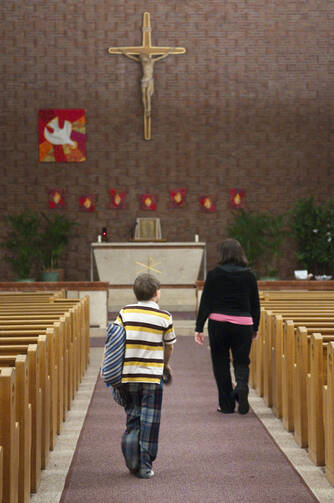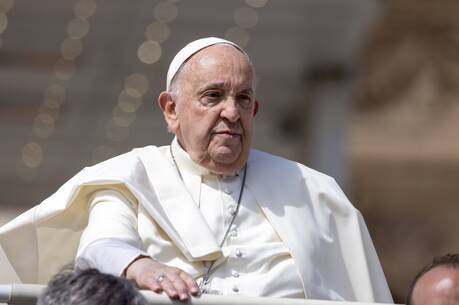Many Catholic dioceses are going through the difficult journey of merging two or more parishes into a single entity. Usually, after a long process of planning for the change, the moment arrives for the parishes to give up their identity and form a new entity. It is a heart-wrenching experience for many long-time parishioners, no matter how much preparation has gone into the transition.
In one diocese, a parish was slated to merge with another a few miles away. A new parish would come into existence from the combination of the two. More was at stake for the parishioners of this parish because it would no longer have scheduled Masses celebrated at their location. Those at the other parish would be able to attend their original worship site, albeit with a new name and a changed Mass schedule.
When the day of closure for this parish arrived, a large group of faithful parishioners came together for the Saturday 5 pm liturgy, the only Mass offered that weekend. Before entering, the congregation gathered around the large statue of their patron saint just to the side of the main entrance. The pastoral administrator who had served the community as their pastoral leader for 10 years, spoke about their namesake as “having forgiveness that flowed like a river.” Using this as an example of forgiveness, the pastoral administrator, together with the previous pastors, encouraged people to forgive any parishioner who may have hurt them in the past, as well as asking others to forgive them. They then formed a procession to the main doors of the church, led by the Processional Cross, the altar servers and two teenagers, one carrying a small statue of their patron and the other carrying a relic of the saint.
At the Doors
Stopping at the main doors, the pastoral administrator reminded the people of the many times they and so many others had entered these doors over the years, making this sacred worship space their spiritual home. As they moved into church, one person carried all of the parish directories, each one created during the tenure of a previous pastor. The directories included the story of the parish up to the time of their writing, along with the faces of those who belonged to the parish family. Another person carried the Sacramental Registers listing baptisms, first communions, confirmations, marriages and funerals. These two treasured documents were given a special place in the sanctuary as the congregation processed into church for the last time while singing “Table of Plenty.” The Mass continued with the proclamation of the Word and the homily. For the Prayer of the Faithful, members of the community representing different age groups read the petitions to symbolize the contributions that those of all ages had made to the parish. Various images flashed on a large screen after Communion while the people sang “I Know the Plans I Have for You, Says the Lord.” A gift was then given to the retired priest who had been their Sacramental Minister.
Ending Rituals
The recession out of church included the Book of the Gospels, the statue of their patron, the parish directories, the Sacramental Registers and the tapestries that had been hanging on the walls listing the names of all those who had been buried from the parish. Three others carried out the holy oils; the RCIA Director with the Oil of Catechumens, a young person, recently confirmed by the bishop, with the Oil of Chrism and a parish nurse with the Oil for the Sick. A reception followed, at which people exchanged stories with one another about the parish, prompting a mixture of laughter and tears. A special inaugural Mass would soon take place at the new parish but for now it was important to say a proper goodbye to a place that held so many fond memories and treasured graces.
Thomas B. Sweetser, S.J., is founder and director of the Parish Evaluation Project.








